Hong Kong is a place where you can while away your days eating the most delectable cuisines and shopping to your heart’s content. That much, every traveller is aware of. Did you know though, that Hong Kong actually offers a sustainable nature escape as much as it does an urban culture? The Hong Kong UNESCO Global Geopark is just a brief boat ride away from the city centre, and will immediately whisk you to your best ecological adventures yet.
EXPLORE HONG KONG’S GEODIVERSITY
In case you haven’t heard of Hong Kong’s astounding geopark, think volcanic hexagonal rocks, mangroves, coral communities, and fishing villages. A far cry from the hustle and bustle of central Hong Kong, right? That’s what makes this adventure so exciting and definitely worth adding to your bucket list!
How did the Hong Kong UNESCO Global Geopark come to be?
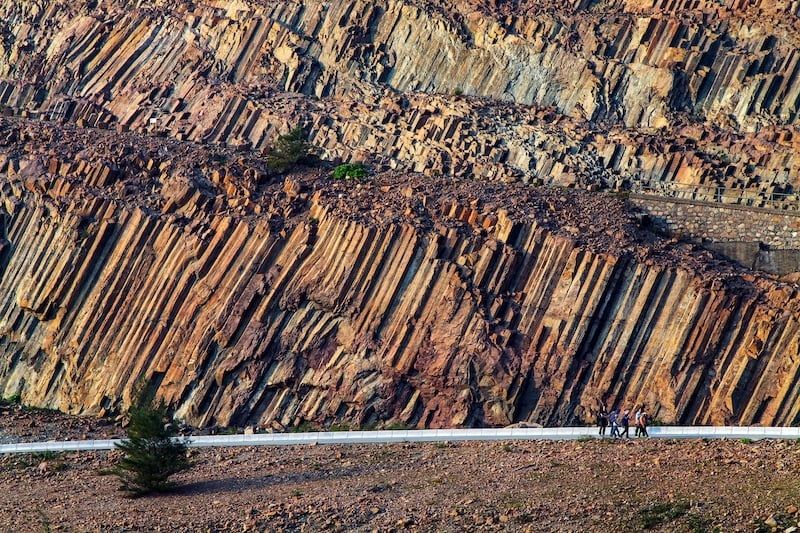
Image credit: Tugo Cheng | Hong Kong Tourism Board
Around 140 million years ago, the area, which would eventually become the geopark, experienced a series of volcanic eruptions; this eventually led to the unique formation and interesting colouring of its islands and rocks. To milk your immersion amidst these special landforms, you need to sail around the geopark’s two main regions: the volcanic rock region of Sai Kung and the Northeast New Territories Sedimentary Rock region.
In Hong Kong though, the Sai Kung Volcanic Rock region is the premier destination for avid travellers. It consists of volcanic hexagonal rock formations you won’t be able to find anywhere else in the world.
According to geologists, most hexagonal rock formations are made up of basic basaltic lava. But Sai Kung’s volcanic rock formations are acidic silica-rich rhyolitic volcanic rocks, which have been a constant point of discussion among scientists. Needless to say, this whole region is a protected area thanks to its deep history and geological charm.
Exploring the Sai Kung Volcanic Rock region
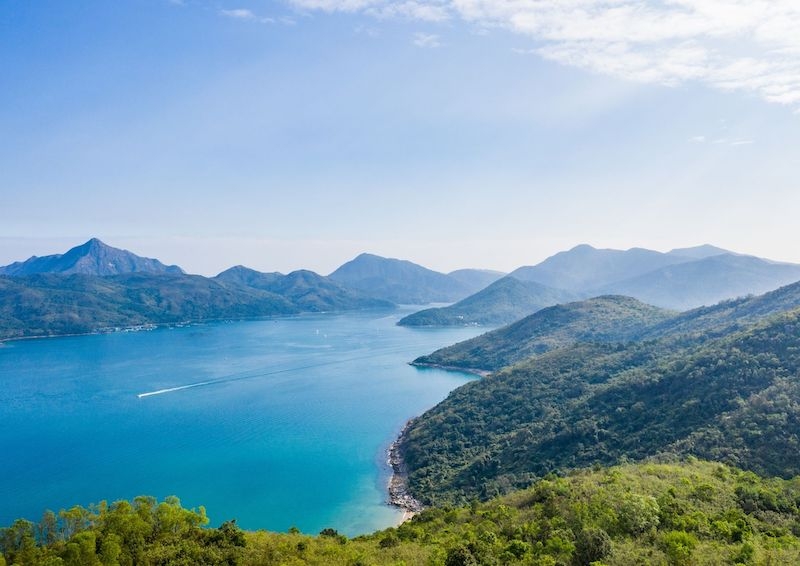
Image credit: ahei via Canva Pro
You can stay a week or two when you visit the Hong Kong UNESCO Global Geopark, since it has many islands to be explored. The relevant authorities work tirelessly so that the park can retain everything in its original state; hence, you are assured of an authentic ecological adventure. This is the perfect time to commune with nature. Let the natural beauty remind you of how important it is to sustain and protect the environment. Besides, nobody wants a rushed vacation!
The Sai Kung region alone is composed of four main islands: Sharp Island Geo-Area, High Island Geo-Area, Ung Kong Group Geo-Area, and the Ninepin Group Geo-Area. Here, visitors can enjoy different beaches, soak their feet in clear water, go on easy hikes, and of course, take striking photos against unique rock formations!
If you want to see more of Hong Kong’s great outdoors, the video below gives you an enticing glimpse.
Encounter “pineapple rocks”
We’re sure you’re wondering: What on earth are “pineapple rocks”? Well, don’t fret because they aren’t literally made out of pineapples. Sharp Island is mostly known for its cool beach and long stretch of sand. But tropical vibe aside, the star of the island are actually its “pineapple rocks” that were once granite boulders.
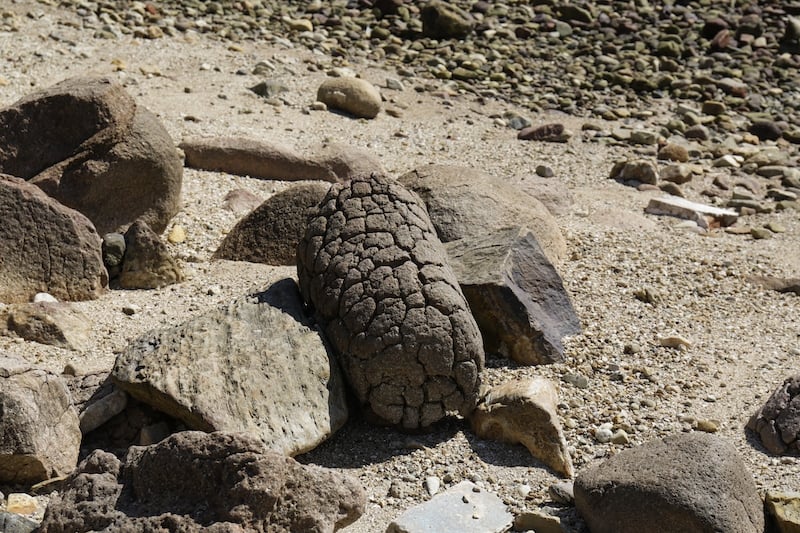
Image credit: Hong Kong Tourism Board
Weathering and erosion eventually made them into what they are now: quartz monzonite boulders scattered on Sharp Island’s beaches including the Tombolo beach. These boulders are actually the namesake of a famous Hong Kong delicacy that’s pretty popular among locals and tourists alike: the pineapple bun!
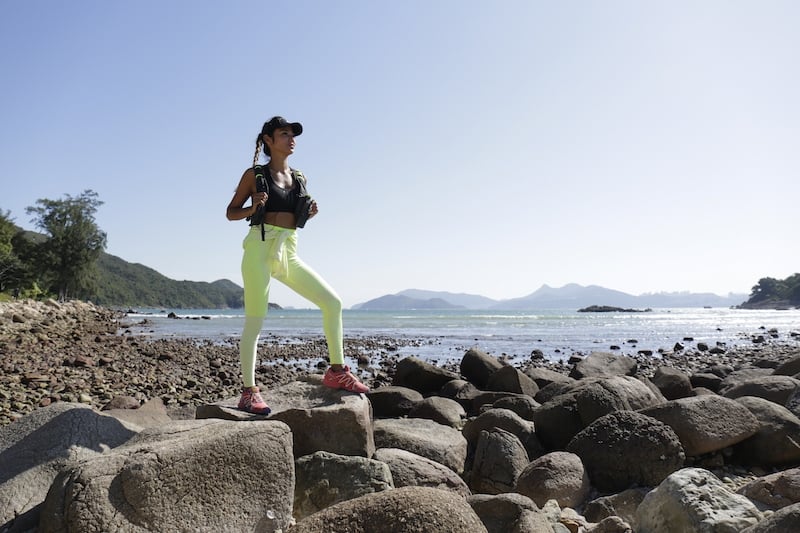
Indonesian influencer Shanty Paredes on Sharp Island | Image credit: Hong Kong Tourism Board
As their name suggests, Sai Kung’s “pineapple rocks” have pineapple bun-like cracks that remind people of the local snack. These boulders are said to have inner and outer layers, which resulted in the cracks that are reminiscent of the top portion of pineapple buns. What’s more, the outer layer of “pineapple rocks” peel off like onions!
The view of these boulders is quite alluring. But as much as we want one for keepsake, remember that no one is allowed to pick up a “pineapple rock” and go. Tourists are reminded to help sustain and protect the Hong Kong UNESCO Global Geopark by leaving beaches and rock formations as they were. Other attractions of Sharp Island of course include its Tombolo beach, which appears only during low tide, and the mysterious sea caves.
Hike amidst hexagonal rock columns
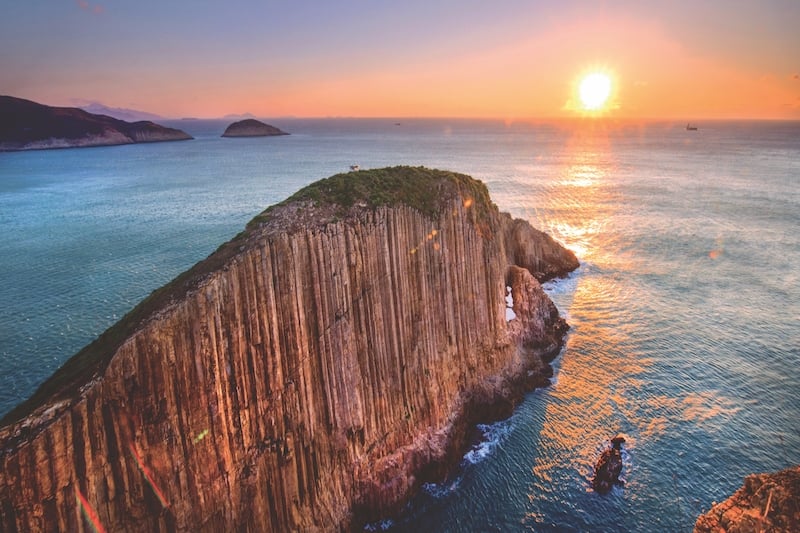
Image credit: Hong Kong Tourism Board
Just when you thought the geopark couldn’t get any better, it does. You can actually witness the hexagonal rock and cliff formations up close and personal on High Island. If you have an affinity for hiking, the better!
We suggest you take the High Island Geo Trail at the East Dam of the High Island Reservoir. This path will lead you to various spots where you can behold the verdant hills and hexagonal volcanic rock columns in all their glory. With the brilliant blue sea as the main backdrop, nothing would be a more breathtaking sight in Hong Kong.
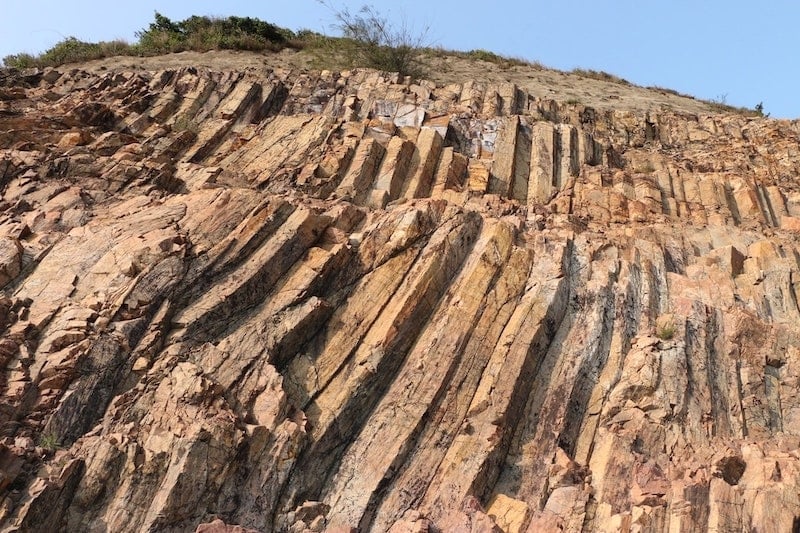
Image credit: Kdwk Leung
The trail is fairly easy to hike so you won’t have to worry about the difficulty level. But if you’d rather sit back and enjoy the unique nature views High Island has to offer, there are picnic facilities along the trail that you can unwind to. Imagine eating a hearty meal while admiring the coastline and the giant rock columns that have 140 million years of history behind them. Now that would truly be an experience of a lifetime.
Trivia: The hexagonal columns cover an estimated area of over 100 square kilometres, a height up to 100 metres, a total thickness of 400 metres, and an average diameter of 1.2 metres. Some columns are even s-shaped! Name another hexagonal attraction in the world that comes close. We’ll wait!
Kayak and cave hop between islands
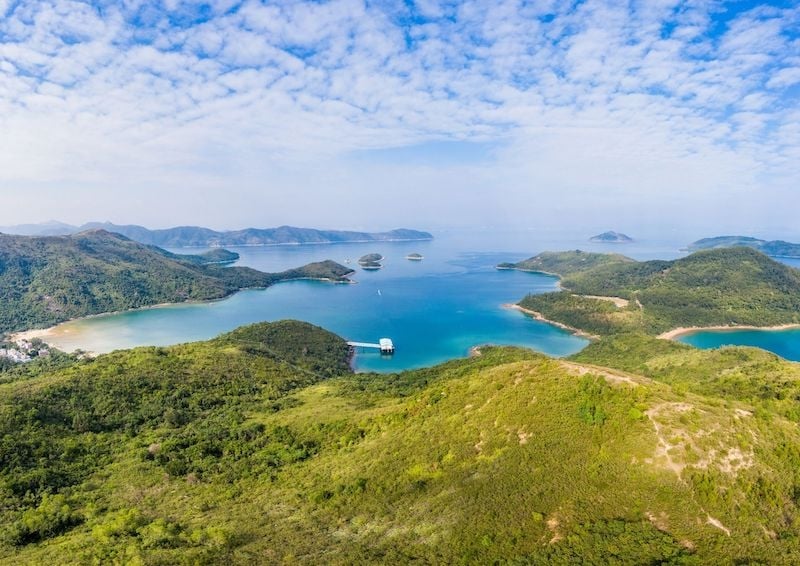
Image credit: ahei via Canva Pro
Your sightseeing of hexagonal rocks continues in the geopark’s Ung Kong group of islands. Only this time, you’re encouraged to go kayaking or boat riding a little bit more — the geopark’s biggest sea caves are waiting for you!
The first thing you need to know about Ung Kong is that it consists of three main subislands: Wang Chau, Basalt Island, and Bluff Island. They all feature the geopark’s iconic hexagonal rock formations as well as sea arches and caves. Wang Chau is the smallest island but is home to the Wang Chau Kok Cave, one of the biggest sea caves in Sai Kung. This quaint island also features an impressive 30 metre- or 98 foot-high sea arch.
Meanwhile, Basalt Island takes it up a notch quite literally as it is home to a 45 metre- or 147 foot-high sea arch. Here, you may also get off your boat and explore the Guan Gong Knife Cave either by swimming or on foot where the water isn’t high. The cliffs feature the hexagonal structures too, so we suggest you take this once-in-a-blue-moon opportunity to swim amidst these otherworldly landforms and sea stacks.
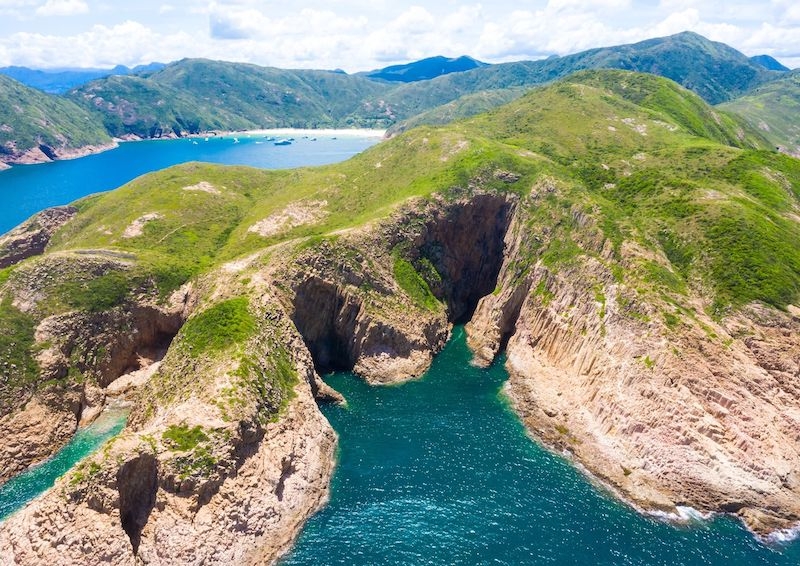
Image credit: Chunyip Wong via Canva Pro
Trivia: Basalt Island was named after — for the lack of a better term — a mistake. Because most hexagonal rock columns around the world are made of basalt, the first visitors of the island mistakenly thought the same logic applied to the hexagonal rocks of the Hong Kong UNESCO Global Geopark. It doesn’t. The geopark’s hexagonal rock formations are acidic silica-rich rhyolitic volcanic rocks. But the “basalt” name for this particular island was retained.
On the other hand, Bluff Island is not nearly as big and popular as Basalt Island, but you can get to this island by kayaking from Basalt Island; the trip makes for a cool and less crowded getaway. It’s most known for being a go-to diving and snorkelling spot to discover beautiful coral reefs too.
Feel free to explore the Candle Cave, take photos against the hexagonal rock formations and appreciate the whiff of fresh sea breeze. If you’re in the mood for a short hike, you can trek to the top points of the island to get a breathtaking view of the neighbouring Basalt Island. With pristine seawater, the marine life thriving, and the hills verdant with greenery, this island is indeed postcard-worthy!
Discover uninhabited places
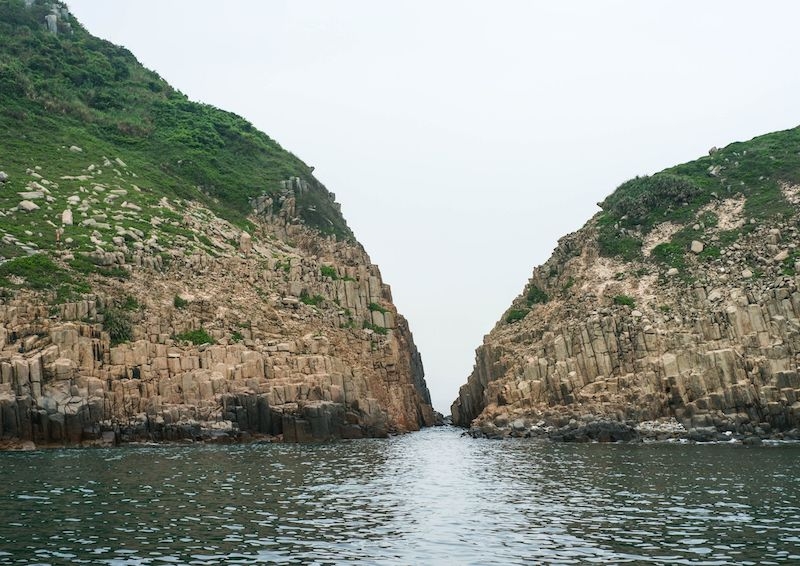
Image credit: TY_Lui via Canva Pro
Want to sail to the destination where the hexagonal rock formations are the largest? Head to Ninepin Island. This island region is composed of many subislands and the beauty of them all is that they’re uninhabited. Ninepin is considered to be a barren wilderness too, with little vegetation yet abundant in rock columns. This would be an ideal place to have a quiet escape and bask in the fascinating geological formations around you.
Ninepin has three larger islands worth the visit: East Ninepin, South Ninepin, and North Ninepin Island. Their rocks have experienced long-term wind and wave erosion resulting in stunning abraded landforms. However, North Ninepin Island holds the trophy for featuring the most impressive hexagonal columns you’ll see in the Ninepin group of islands; you can find these columns at Ngan Peng Keng, which features two massive fault planes, and Yuen Shek Pai, where the hexagonal rocks form a spiral staircase.
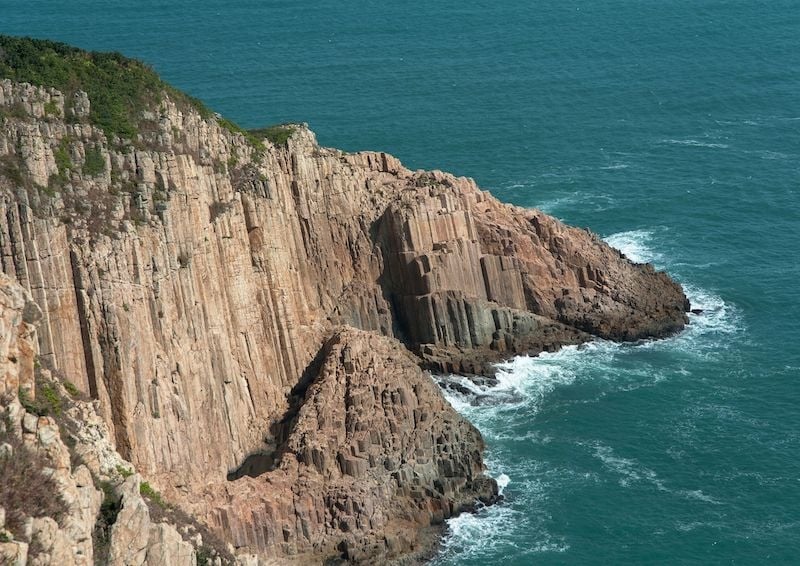
Image credit: LeeYiuTung via Canva Pro
On the other hand, South Ninepin Island is known for its sea caves, the most popular being the Tiger Mouth Cave and Y-shaped Cave. You may swim inside these caves if you have a guide. Hiring a guide doesn’t only allow you to support Hong Kong’s ecotourism initiatives; it also lets you learn more about what these protected zones mean to locals. Aside from that, the island features the smallest Tin Hau Temple in Hong Kong!
Trivia: British seamen were actually responsible for naming this group of islands “Ninepin.” The name comes from an old English game that’s quite similar to bowling, and the formation of Ninepin Island reminded them of the said game. Hence, the Ninepin group of islands we know today.
In case you’re up for hiking too, prepare to bring your own snacks and refreshments because the Ninepin islands don’t have refreshment points. That said, be sure to clean as you go. If you can’t find waste bins, put your trash in an allocated bag for proper disposal later on. Hong Kong wants to keep its UNESCO Global Geopark untouched, so they avoid putting up stands or infrastructure when they can.
The Ninepin islands don’t even have piers; this is to keep them unspoiled as much as possible. Inexperienced hikers are advised to view the islands from a boat instead of stepping foot on Ninepin Island, which also makes for sustainable crowd control and keeps foot traffic in the area at a healthy rate.
Also read: 24 Best Things to Do and Places to Visit On Your Next Visit to Hong Kong
Who would have thought that we could discover world-class rock formations and captivating landforms in Hong Kong, and just minutes away from city life? With such a rich history behind it, we’ve only scratched the surface.
KNOW MORE ABOUT NATURAL WONDERS
This UNESCO world heritage site has many more areas to explore, such as Tung Ping Chao, Double Haven, and Ma Shi Chau. Not to mention, the many geotrails spread across Sai Kung’s islands. Indeed, Sai Kung’s UNESCO Global Geopark is Hong Kong’s unsung gem that needs to be lauded for its geodiversity and preservation efforts. Well, when do you plan on visiting?
For more information, visit Hong Kong Tourism Board’s official website, Facebook, and Instagram.
Brought to you by Hong Kong Tourism Board. Featured image credit: Leung Cho Pan via Canva Pro




